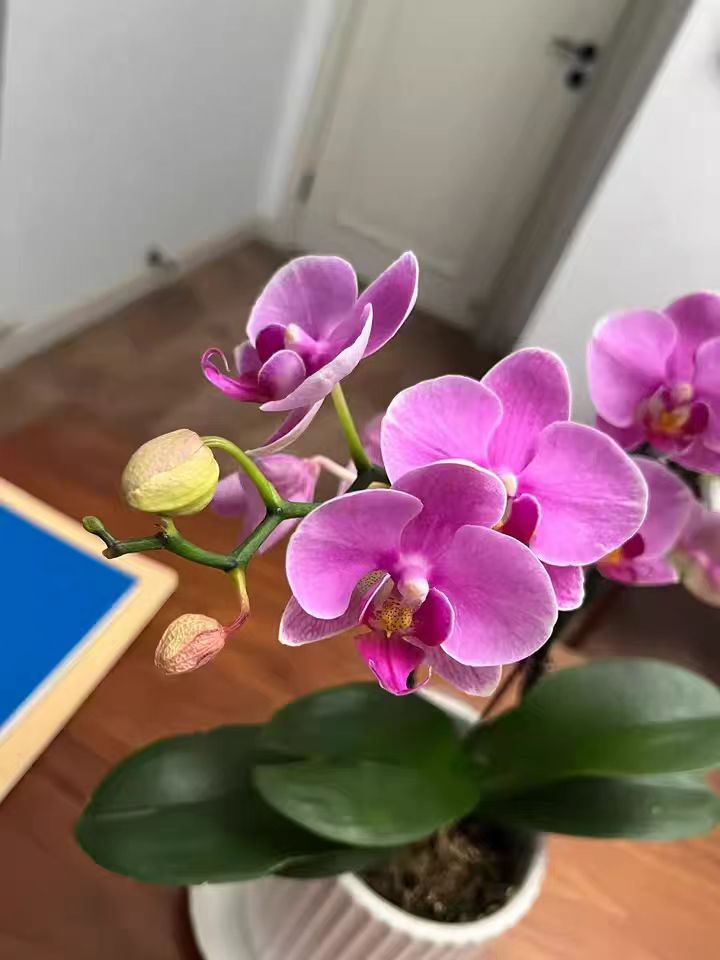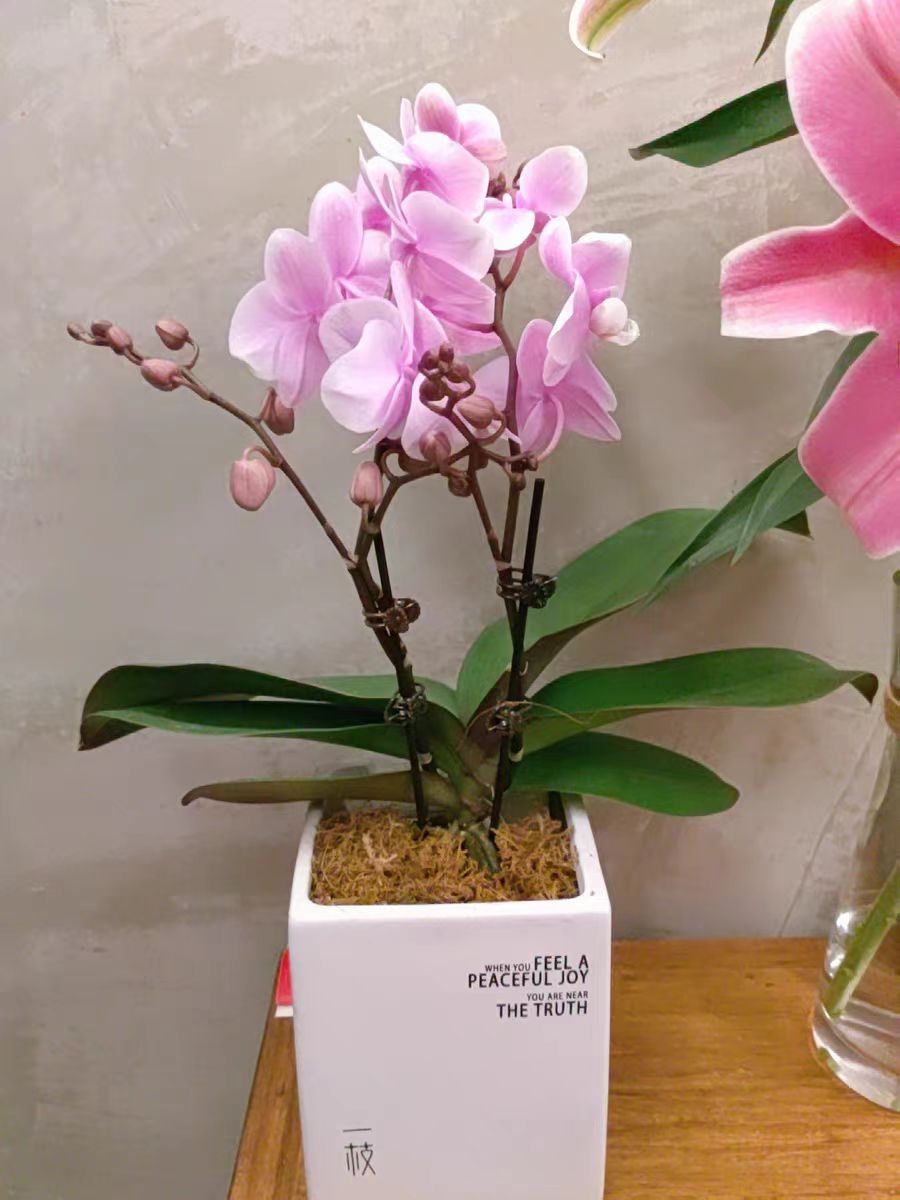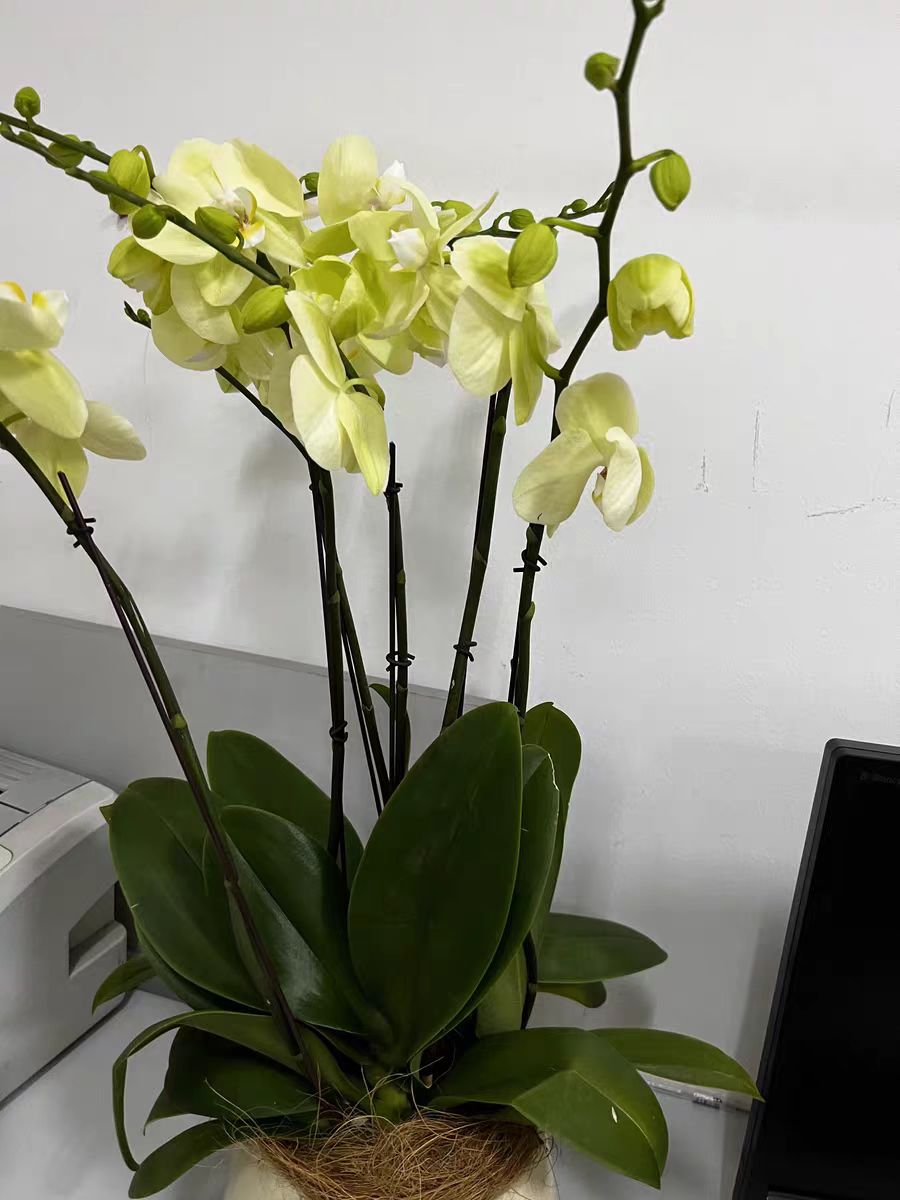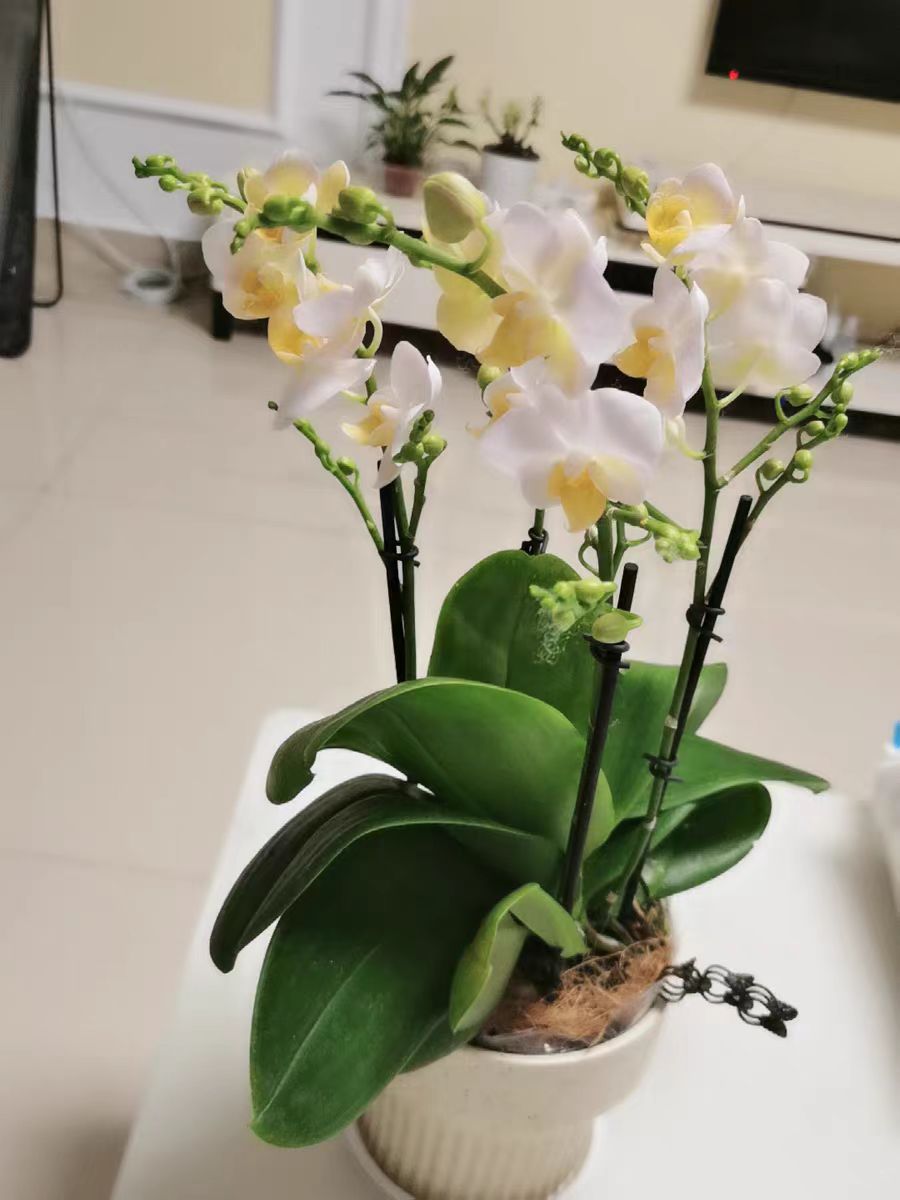Phalaenopsis, a flower whose name itself implies elegance and beauty, is not only highly favored in the flower market but also a "beloved" among many flower enthusiasts. After the flowering period of Phalaenopsis ends, can it rebloom? If so, what are the reasons that enable Phalaenopsis to bloom again?
From the perspective of the growth laws of plants, the reblooming of Phalaenopsis is a manifestation of its instinct for life continuation and reproduction. As a perennial herbaceous plant, Phalaenopsis follows a certain life cycle pattern during its growth process. Under suitable environmental conditions, after completing one flowering process, it does not reach the end of its life but enters a relatively dormant and restorative stage to accumulate energy for the next flowering. This is similar to many perennial plants, which achieve the continuation of the species and the expansion of the population through the continuous cycle of growth, flowering, dormancy, and regrowth.
In terms of the physiological structure and function of Phalaenopsis itself, it has the material basis for reblooming. Phalaenopsis has thick leaves and robust roots. The leaves are not only the main site for photosynthesis, which can convert light energy into chemical energy and synthesize the organic substances needed for its own growth, but also can store a large amount of water and nutrients. After the flowering period, these stored nutrients become an important energy source for the plant to resume growth and bloom again. And its roots, in addition to fixing the plant, can also absorb water and mineral nutrients from the soil, providing the necessary material support for various physiological activities of the plant. During the reblooming process, the roots will actively absorb nutrients to meet the needs of plant growth and flower bud differentiation.
The reblooming of Phalaenopsis is also closely related to environmental factors. Temperature is one of the key factors affecting the reblooming of Phalaenopsis. Phalaenopsis is native to tropical and subtropical regions and is relatively sensitive to temperature. Generally speaking, the temperature suitable for the growth and flower bud differentiation of Phalaenopsis is between 15 and 25 degrees Celsius. After the flowering period ends, if the plant can be placed within this temperature range, it can create good conditions for its reblooming.
Light is also an indispensable factor. Phalaenopsis requires sufficient but not overly intense light. Moderate light can promote photosynthesis, providing enough energy for the plant, and also plays a certain inducing role in flower bud differentiation. When cultivating Phalaenopsis, placing it in a place with diffused light can not only prevent the damage caused by direct strong light to the plant but also meet its light requirements, which is conducive to reblooming.
In addition, reasonable water and nutrient management is equally important. Watering should follow the principle of "watering when the soil is dry and seeing it wet", avoiding waterlogging that may cause root rot and affect the growth of the plant. In terms of fertilization, after the flowering period, applying an appropriate amount of fertilizers rich in phosphorus and potassium elements can promote flower bud differentiation and the growth of flower stems, providing sufficient nutrients for reblooming.
Phalaenopsis can not only rebloom, but the process of its reblooming is the result of the interaction between the plant's own physiological characteristics and environmental factors. By understanding the principles of Phalaenopsis reblooming and mastering the correct cultivation methods, we can make this beautiful "butterfly" dance gracefully in our lives again.
Can Phalaenopsis rebloom?

Share with
Tagged in :




Leave a Reply